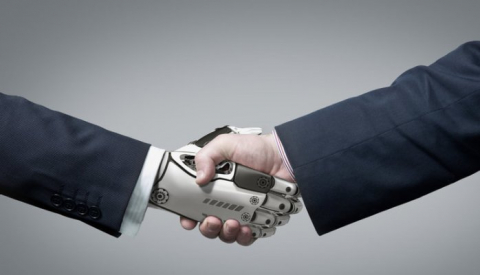
Over the last few years I’ve seen a number of articles on how, as IT professionals, we can work to build users’ trust in the systems we produce. Clearly this is important, as a system that is not trusted by its targeted users will not be used, or will be used in efficiently.
A system trusted by a user, is one that the user feels safe to use, and trusts to do tasks without secretly executing harmful or unauthorised programs
Wikipedia
This seems an obvious topic of interest to IT professionals.
For instance, if customers of a bank do not trust that the mobile app allowing them to interact with their funds cannot be trusted to accurately complete requested actions, it won’t be used.
But there’s a flip side to this trust coin that is not often talked about or studied: how do we design systems that we can be sure will not be trusted by all-too-trusting humans when it is inappropriate or unsafe to do so.
We actually experience this in our everyday lives, often without thinking about what it really means.
One example: compared to Google Maps on my phone, I have lower trust in my car’s navigation system to get me to the destination by the quickest route. As an IT professional, I know that Google Maps has access to real-time traffic information that the built-in system does not, and so I will rely on it more if getting to my destination in a timely manner is important.
My wife, who is not in the IT business, has almost complete trust in the vehicle navigation system to get her where she wants to go without making serious mistakes.
In a case like this, it’s not really of monumental important which one of us can be accused of misplaced trust in a system. But there are cases where it’s very important.
For instance, current autonomous vehicles available to the general public are SAE level 3, which means they must be monitored by a human who is ready to intervene should it be necessary. If a Tesla computer cannot find the lane markings, it notifies the driver and hands over control.
But how many reports have we seen of Tesla drivers who treat the system as though it can take care of all situations, thereby making it safe for them to engage fully in other activities from which they cannot easily be interrupted?
Tesla Autopilot crash driver ‘was playing video game’
Tesla’s Autopilot lulled driver into a state of ‘inattention’ in 2018 freeway crash
One could say “there will always be stupid people” but this just sweeps the important problem under the rug: how do we design systems which install an appropriate level of trust in the user? Clearly the Tesla system in these cases, or the context of the system’s use, instilled too much trust on the part of the user.
An interesting study done by the Stanford University School of Engineering addresses this topic in an interesting way and with informative results.
The engineers looked at how people’s moods might affect their trust of autonomous products, such as smart speakers, to discover a complicated relationship.
Unsurprisingly the study found that a user’s opinion of the technology is the biggest determining factor in the user’s trust in the product. Surprisingly, the study also found that users who had either a positive or negative opinion of the technology tended to have higher levels of trust.
“An important takeaway from this research is that negative emotions are not always bad for forming trust. We want to keep this in mind because trust is not always good,” said Liao, who is now an assistant professor at the Stevens Institute of Technology in New Jersey and lead author of the paper.
This makes something clear: if we are to design systems that are to be trusted appropriately, we must understand that the relationship between the user’s knowledge, mood, and opinion of the system is more complex than we might imagine. We need to take into account more than just a level of trust we can install through the system’s interaction with the human, but other confounding factors: age, gender, education. How to elicit and use this information in a manner that is not intrusive and doesn’t itself generate distrust is not currently clear–more study is needed.
As IT professionals, we must be aware that instilling a proper level of trust in the systems we build is important and focus on how to achieve that.